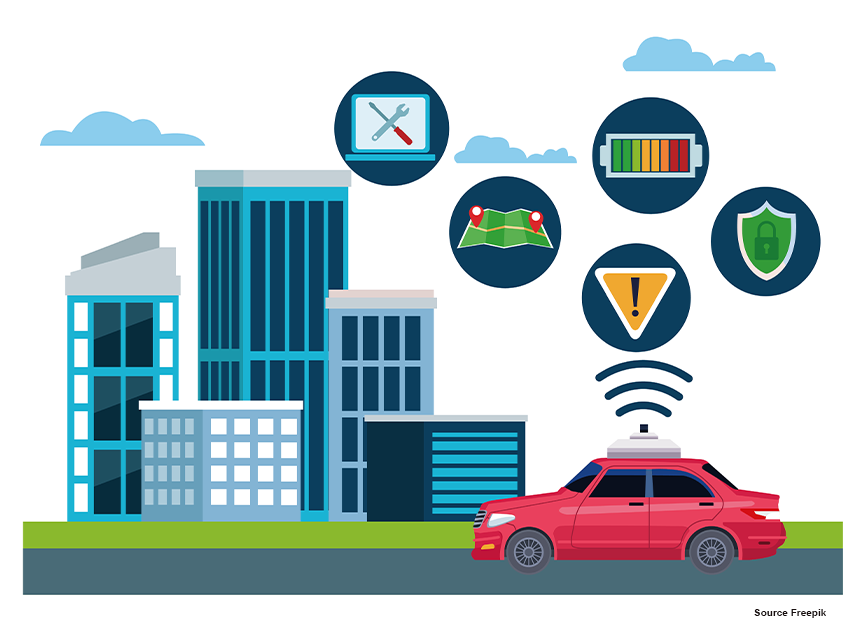Blog on RFID Technology and IoT Solutions
Blog HomeFEATURED POST
How IoT is Transforming the Construction Industry in 2025: Smart Sites, Safer Workers
The construction industry—traditionally marked by its reliance on manual labour and traditional methods—is undergoing a digital transformation like never before. In 2025, the Internet of Things (IoT) is at the forefront of this movement, converting conventional sites into smart, data-driven ones. From real-time monitoring to predictive maintenance, IoT is redefining construction efficiency, safety, and sustainability.Smart
Read more
How are Cold Chain Innovations and Technologies Revolutionizing the Cold Chain Industry?What is Cold Chain?The Cold Chain refers to a temperature-controlled supply chain that is specifically designed to preserve and maintain the quality, safety, and freshness of perishable products, particularly food and pharmaceuticals, throughout their entire journey from production to consumption. It involves the transportation,
Read more
FID has its challenges and limitations that need to be addressed to optimize its use in the retail industry. In this blog post, we will discuss some of the main challenges and limitations of RFID technology in retail.
Read more
What is a Logistics Solution Provider?A logistics solution provider (LSP) is a company or organization that offers logistics solutions and services to other businesses, including transportation, warehousing, inventory management, distribution, and other value-added services such as customs clearance, packaging, and labelling. LSPs help businesses optimize their supply chain operations, streamline their logistics processes, and improve
Read more
What is RFID? RFID stands for Radio Frequency Identification. It is a technology that uses radio waves to wirelessly identify and track objects. An RFID system typically consists of two components: an RFID reader and an RFID tag. The reader emits a radio signal that activates the tag, which then responds with its unique identification number. RFID
Read more
Radio Frequency Identification (RFID) technology has been transforming the retail industry for many years, helping businesses to improve inventory accuracy, reduce out-of-stock incidents, and increase efficiency in their stores. As the technology continues to evolve, new trends and developments are emerging that are likely to shape the future of retail. In this blog post, we…
Read more
What is RFID and how does it work?RFID (Radio Frequency Identification) is a wireless technology that uses radio waves to identify and track objects. An RFID system typically consists of three components: an RFID reader, an RFID tag, and a backend system for processing the data.An RFID system consists of an RFID reader, an RFID
Read more
What is Automated Inventory Management? Automated inventory management is the use of technology and software to streamline and optimize the process of managing inventory. It involves the use of systems and software to automate tasks such as tracking inventory levels, forecasting demand, ordering, and replenishing stock, and monitoring stock movements.Automated inventory management systems typically use
Read more
What is IoT in Automotive Industry?IoT in Automotive Industry, or the Internet of Things, in the automotive industry refers to the integration of internet-connected devices and technology into vehicles. This can include things like wireless connectivity for infotainment systems, advanced driver assistance systems (ADAS), and telematics for remote vehicle monitoring and control. The goal of
Read more
What is Smart Traffic Management Systems?Smart traffic management systems are advanced technologies that aim to improve the efficiency and safety of transportation systems using real-time data, communication networks, and advanced algorithms. These systems use a variety of sensors, cameras, and other technologies to gather data about traffic flow, weather conditions, and other factors, which is
Read more
What is Inventory Management System, and how does it work? Inventory management is the process of overseeing and controlling the ordering, storage, and use of materials and products in a company or organization. This includes monitoring stock levels, determining reorder points, and scheduling deliveries to ensure that materials and products are available when needed, while also
Read more- Intellistride.com
- Blog